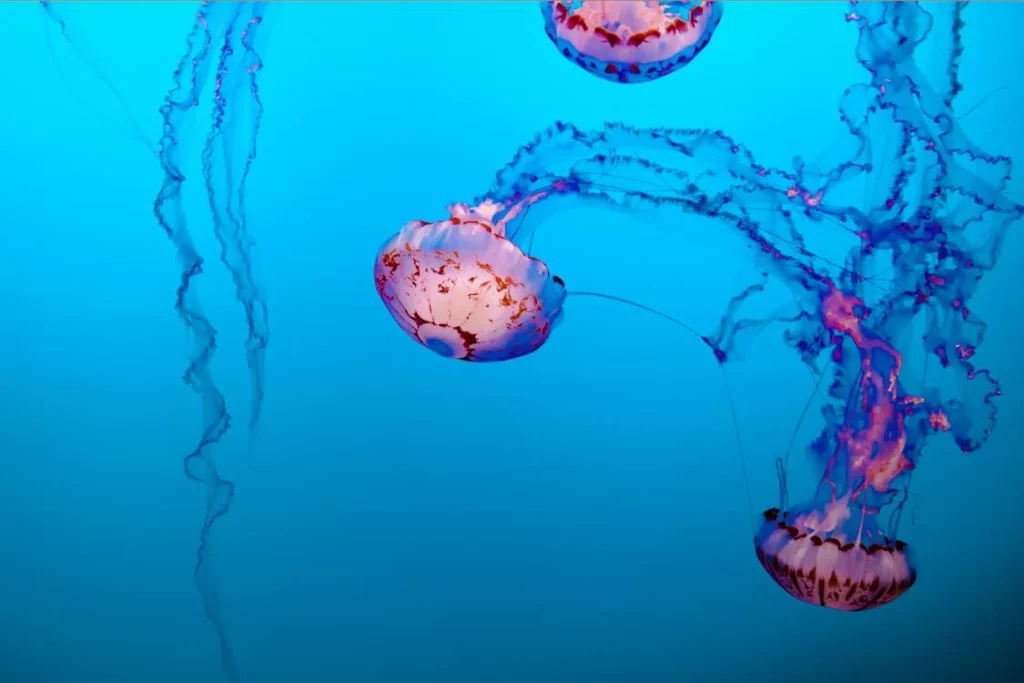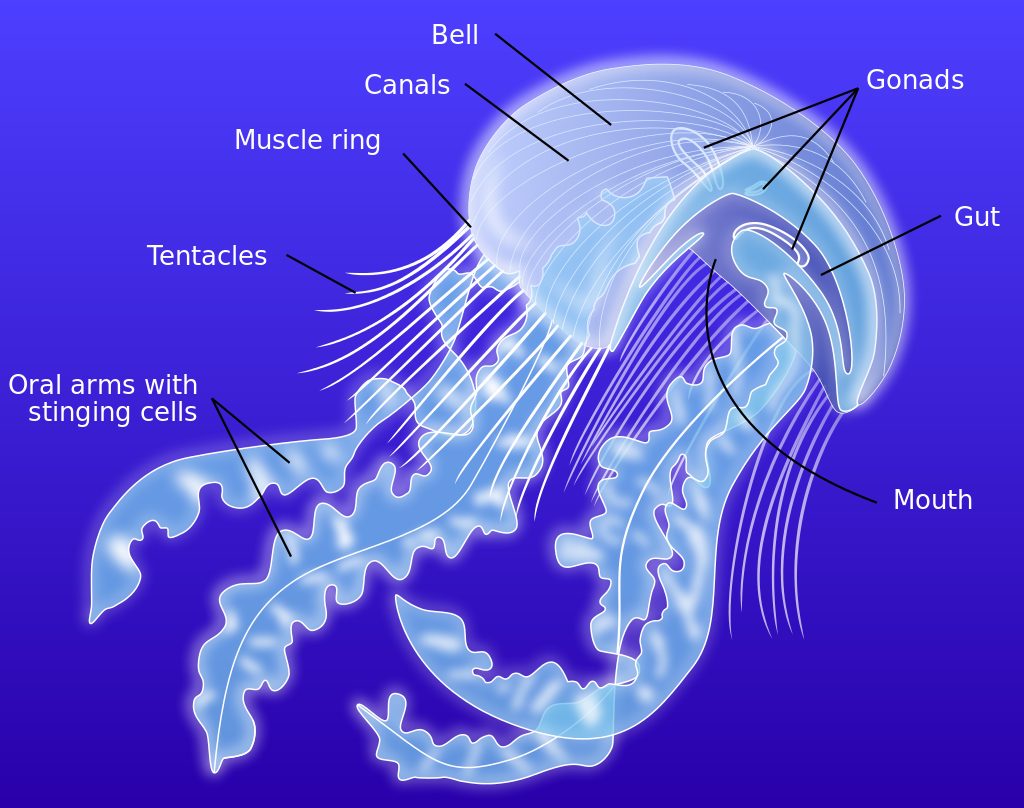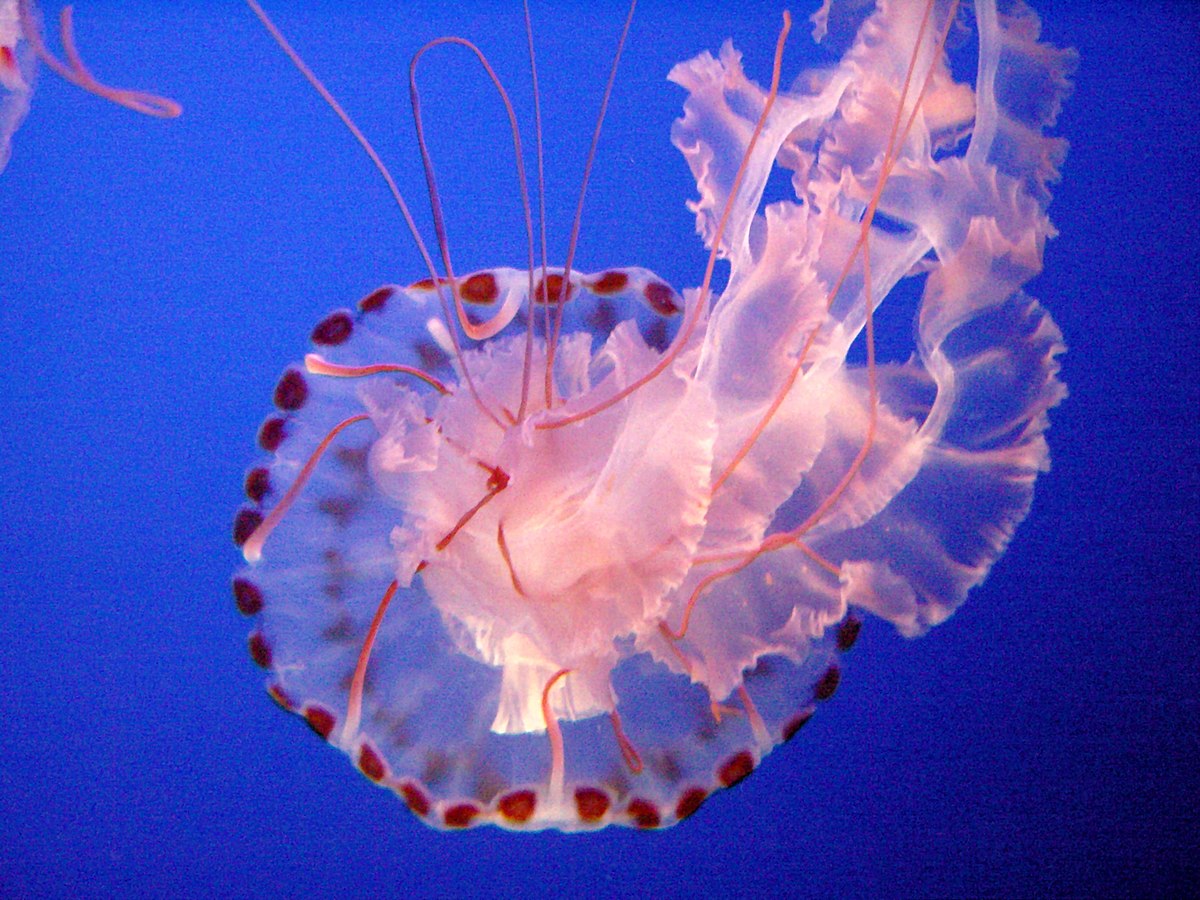Ever been stung by a jellyfish and wondered about their dietary habits? Frighteningly enough, jellyfish are far from defenseless. Equipped with venomous tentacles, these invertebrates paralyze their prey and pull them into a distinct hollow cavity that serves as their stomach. However, rest assured, human beings are not on their menu. Jellyfish diets consist mostly of crustaceans and plankton.
Jellyfish Dining Explained

Jellyfish have an intriguing, unique way of eating. Let’s explore their diet in detail. Their hollow cavity, both a stomach and an intestine, is a design/characteristic from the Coelenterada family, which translates to “hollow intestine”. Swaying tentacles disable the prey with venom before guiding food and water into the open cavity.
What Are Jellyfish’s Preferred Meals?
The primary diet of jellyfish, which primarily consist of:
- Crustaceans
- Plankton
Despite their potential threat to us, jellyfish are food for many sea creatures such as turtles, sunfish, and spade fish. Some people in Asia even consume them as part of various culinary dishes.
The Fascinating Lifecycle of a Jellyfish

As we seek to understand what jellyfish eat, another fascinating aspect of these creatures is their lifecycle. Life for a jellyfish starts in what’s known as the polyp stage. This occurs when the sperm and egg unite, resulting in a non-mobile polyp. As summer approaches, the polyp sheds parts of its body, each growing into a single jellyfish.
Unique Characteristics of Jellyfish

Jellyfish are not fish but invertebrates, meaning they lack a vertebral column. Being composed of 95% water is simply fascinating, especially considering how certain species can grow to significant sizes. For example, the Sea Blubber, has a width of six to seven feet and boasts tentacles reaching thirty to forty feet!
The Many-Tentacled Jellyfish, though smaller, has a whopping hundred tentacles, while the Portuguese Man-of-War’s forty-feet long tentacles are capable of paralyzing a large fish. If humans accidentally interact with these jellyfish, they should seek immediate medical attention to counteract the potential threat of venom-induced shock.
Jellyfish Habitats and Locomotion

When we consider “What do Jellyfish Eat”, understanding their habitat and movement is crucial. Typically in oceans, these creatures often get swept up by strong currents into sheltered bays. They’re capable of vertical movement by contracting muscles but lack the means to propel horizontally.
Finally, the menacing Box Jellyfish represents an exception. Known for being a good swimmer, it is also the most dangerous marine creature to humans. This antagonist resides in Northern Australian waters and sports up to fifteen tentacles on each corner of its squarish body.
Awaiting a hapless prey to bump into it, the Box Jellyfish can move swiftly, filling its ‘box’ body with water and forcing it back out. Dragging its stinger-laden tentacles behind, a mere touch can trigger an immediate and painful reaction in humans due to the venom released.